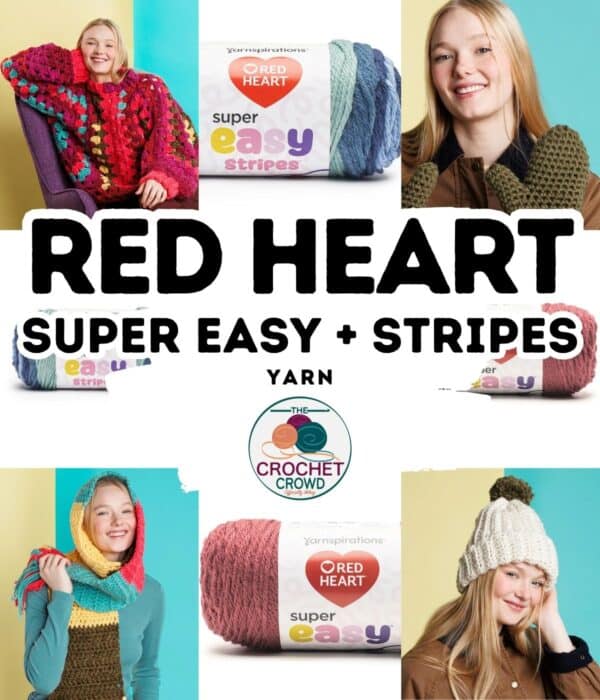Yarnspirations has launched two more yarns this June 2025. They are Red Heart Super Easy and Red Heart Super Easy Stripes. Both are extensions of each other.
I had to look up what makes this super easy. I'm an experienced crocheter, and how will this enhance my life? I had to go on a quest to figure this out.

Two things jumped to my conclusion:
- Value
- Speed
When I learned to crochet back in 1988, I used four-ply medium worsted yarn I picked up from Zellers. My mother wanted me to have success and gave me a 10 mm / N/P hook, and to an experienced crocheter, the hook is way too big for the yarn. I blasted through ball after ball of Sayelle. The stitchwork was too loose, but I didn't know any better. My mother guessed that if I would take too long with the project, I would quit.
This new brand reminds me of my mother, not in the sense of going back to what I used, but in the mindset of wanting success. This new yarn is a #6 bulky weight, so an 8 mm / L/11 hook can be used. It means it gets closer to what my mom did for me, inspiring me to pick up crochet as a form of personal therapy.
Thicker yarn means faster. A bigger hook means lightning speed.
Yarn Details
- Content: 100% Acrylic
- Ball Size: 198 / 7 oz, 173 meters / 189 yards
- Care: Machine wash and dry
- Gauge: #6 Super Bulky
Knitting Gauge: 4" x 4" (10cm x 10cm) 10 sts x 14 r with 8 mm (US 11) Knitting Needles
Crochet Gauge: 4" x 4" (10cm x 10cm) 8 sc x 10 r with 8 mm (US L-11) Crochet Hook
While all of the projects are geared towards colder weather, Yarnspirations is preparing for winter 2025 / 2026.

Leave me your thoughts...